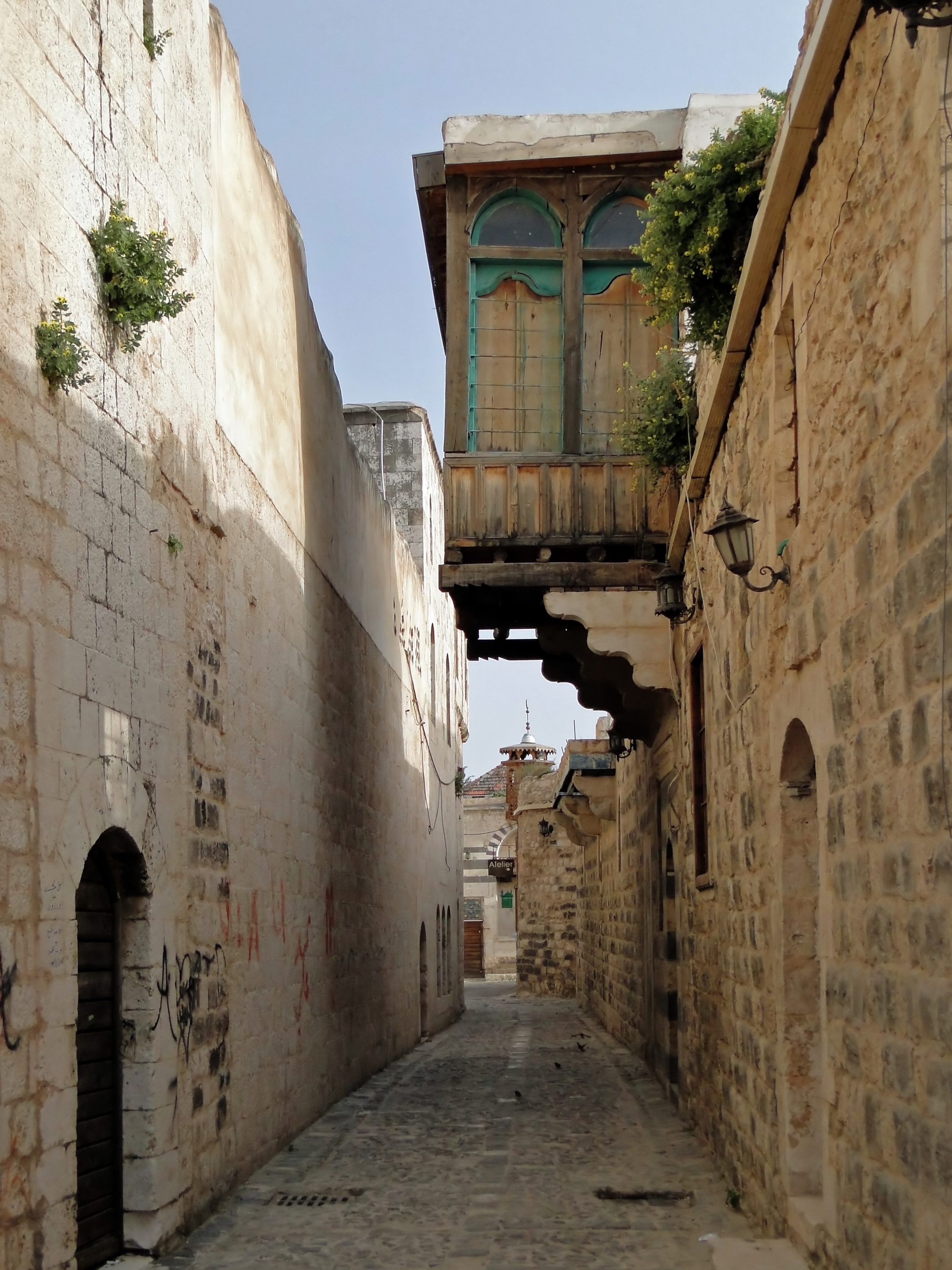|
Arabi Katibi
Arabi katibi (Ottoman Turkish:عربي كاتبى), also katib-i Arabi (كاتب عربي): "Arab secretary" or "secretary of Arabic (language)" was a low-level administrative position in some Arab provinces of the Ottoman Empire beginning approximately in the eighteenth century. The position is best documented in the province of Sidon (Sidon Eyalet), where the Arabi katibi appears to have been primarily responsible for registering rural tax farm (iltizam) contracts and incomes. Other cities where an Arabi katibi is attested in the eighteenth or nineteenth century include Aleppo, Tripoli, Hama, Latakia and Urfa Urfa, officially called Şanlıurfa (), is a city in southeastern Turkey and the capital of Şanlıurfa Province. The city was known as Edessa from Hellenistic period, Hellenistic times and into Christian times. Urfa is situated on a plain abo .... "Arabi Katibi" has also become a common family name in the Levant. References 18th century in the Ottoman Empire ... [...More Info...] [...Related Items...] OR: [Wikipedia] [Google] [Baidu] |
Ottoman Turkish
Ottoman Turkish (, ; ) was the standardized register of the Turkish language in the Ottoman Empire (14th to 20th centuries CE). It borrowed extensively, in all aspects, from Arabic and Persian. It was written in the Ottoman Turkish alphabet. Ottoman Turkish was largely unintelligible to the less-educated lower-class and to rural Turks, who continued to use ("raw/vulgar Turkish"; compare Vulgar Latin and Demotic Greek), which used far fewer foreign loanwords and is the basis of the modern standard. The Tanzimât era (1839–1876) saw the application of the term "Ottoman" when referring to the language ( or ); Modern Turkish uses the same terms when referring to the language of that era ( and ). More generically, the Turkish language was called or "Turkish". History Historically, Ottoman Turkish was transformed in three eras: * (Old Ottoman Turkish): the version of Ottoman Turkish used until the 16th century. It was almost identical with the Turkish used by Seljuk e ... [...More Info...] [...Related Items...] OR: [Wikipedia] [Google] [Baidu] |
Arabic
Arabic (, , or , ) is a Central Semitic languages, Central Semitic language of the Afroasiatic languages, Afroasiatic language family spoken primarily in the Arab world. The International Organization for Standardization (ISO) assigns language codes to 32 varieties of Arabic, including its standard form of Literary Arabic, known as Modern Standard Arabic, which is derived from Classical Arabic. This distinction exists primarily among Western linguists; Arabic speakers themselves generally do not distinguish between Modern Standard Arabic and Classical Arabic, but rather refer to both as ( "the eloquent Arabic") or simply ' (). Arabic is the List of languages by the number of countries in which they are recognized as an official language, third most widespread official language after English and French, one of six official languages of the United Nations, and the Sacred language, liturgical language of Islam. Arabic is widely taught in schools and universities around the wo ... [...More Info...] [...Related Items...] OR: [Wikipedia] [Google] [Baidu] |
Ottoman Empire
The Ottoman Empire (), also called the Turkish Empire, was an empire, imperial realm that controlled much of Southeast Europe, West Asia, and North Africa from the 14th to early 20th centuries; it also controlled parts of southeastern Central Europe, between the early 16th and early 18th centuries. The empire emerged from a Anatolian beyliks, ''beylik'', or principality, founded in northwestern Anatolia in by the Turkoman (ethnonym), Turkoman tribal leader Osman I. His successors Ottoman wars in Europe, conquered much of Anatolia and expanded into the Balkans by the mid-14th century, transforming their petty kingdom into a transcontinental empire. The Ottomans ended the Byzantine Empire with the Fall of Constantinople, conquest of Constantinople in 1453 by Mehmed II. With its capital at History of Istanbul#Ottoman Empire, Constantinople (modern-day Istanbul) and control over a significant portion of the Mediterranean Basin, the Ottoman Empire was at the centre of interacti ... [...More Info...] [...Related Items...] OR: [Wikipedia] [Google] [Baidu] |
Sidon Eyalet
The Eyalet of Sidon (; ) was an eyalet (also known as a ''beylerbeylik'') of the Ottoman Empire. In the 19th century, the eyalet extended from the border with Egypt to the Bay of Kisrawan, including parts of modern Israel and Lebanon. Depending on the location of its capital, it was also known as the Eyalet of Safad, Beirut or Acre. Background Ottoman rulers considered creating the province as early as 1585. The districts of Beirut-Sidon and Safed (encompassing much of the Galilee) were united under the rule of Ma'nid emir Fakhr al-Din Ma'n. History Creation The province was briefly created during Fakhr al-Din's exile in 1614–1615, and recreated in 1660. The province continued to be subordinated in some ways, both in fiscal and political matters, to the Damascus province out of which it was created. Despite conflicts in the 1660s, the Ma'n family "played the leading role in the management of the internal affairs of this eyalet until the closing years of the 17th century, ... [...More Info...] [...Related Items...] OR: [Wikipedia] [Google] [Baidu] |
Iltizam
An iltizam () was a form of tax farm that appeared in the 15th century in the Ottoman Empire. The system began under Mehmed the Conqueror and was abolished during the Tanzimat reforms in 1856. Iltizams were sold off by the government to wealthy notables, who would then reap up to five times the amount they had paid by taxing the peasants and extracting agricultural production. It was a system that was very profitable and was of great benefit to the Egyptian aristocracy under the Mamluk Sultanate, Mamluks, and helped create a large and powerful elite. In Egypt, it was abolished by Muhammad Ali of Egypt, Muhammad Ali as part of his centralization efforts in the early nineteenth century. After confiscating the iltizam lands of the ulema, Muhammad Ali imposed a tax on their significant (and previously tax-exempt) waqf revenues. The holder of an iltizam was a ''mültezim'' () An iltizam was typically an annual agreement. The malikâne (), developed as a replacement for iltizam, was f ... [...More Info...] [...Related Items...] OR: [Wikipedia] [Google] [Baidu] |
Aleppo
Aleppo is a city in Syria, which serves as the capital of the Aleppo Governorate, the most populous Governorates of Syria, governorate of Syria. With an estimated population of 2,098,000 residents it is Syria's largest city by urban area, and was the largest by population until it was surpassed by Damascus, the capital of Syria. Aleppo is also the largest city in Syria's Governorates of Syria, northern governorates and one of the List of largest cities in the Levant region by population, largest cities in the Levant region. Aleppo is one of List of cities by time of continuous habitation#West Asia, the oldest continuously inhabited cities in the world; it may have been inhabited since the sixth millennium BC. Excavations at Tell as-Sawda and Tell al-Ansari, just south of the old city of Aleppo, show that the area was occupied by Amorites by the latter part of the third millennium BC. That is also the time at which Aleppo is first mentioned in cuneiform tablets unearthed in Ebl ... [...More Info...] [...Related Items...] OR: [Wikipedia] [Google] [Baidu] |
Tripoli, Lebanon
Tripoli ( ; , , ; , ; see #Names, below) is the largest and most important city in North Lebanon, northern Lebanon and the second-largest city in the country. Situated north of the capital Beirut, it is the capital of the North Governorate and the Tripoli District, Lebanon, Tripoli District. Tripoli overlooks the eastern Mediterranean Sea, and it is the northernmost seaport in Lebanon. The city is predominantly inhabited by Lebanese Sunni Muslims, Sunni Muslims, with smaller populations of Alawites in Lebanon, Alawites and Christianity in Lebanon, Christians, including Lebanese Maronite Christians, Maronites and Armenians in Lebanon, Armenians among others. The history of Tripoli dates back at least to the 14th century BC. It was called Athar by the Phoenicians, and later ''Tripolis'' by the Greeks, Greek settlers, whence the modern Arabic name ''Ṭarābulus'' derives. In the Arab world, Tripoli has been historically known as (), to distinguish it from Tripoli, Libya, its ... [...More Info...] [...Related Items...] OR: [Wikipedia] [Google] [Baidu] |
Hama
Hama ( ', ) is a city on the banks of the Orontes River in west-central Syria. It is located north of Damascus and north of Homs. It is the provincial capital of the Hama Governorate. With a population of 996,000 (2023 census), Hama is one of the four largest cities in Syria, with Damascus, Aleppo and Homs, Also notably being the only Governorate with no land borders with any foreign countries, Hama is also known for its Cheese-making tradition, notably reflected in a signature local dessert Halawet el Jibn. The city is renowned for its seventeen norias used for watering the gardens, Which are claimed to date back to 1100 BC. Though historically used for irrigation, the norias today are purely for show for the local population. History The ancient settlement of Hamath was occupied from the early Neolithic to the Iron Age. Neolithic The stratigraphy is very generalized, which makes detailed comparison to other sites difficult. Level M ( thick) contained both white ware ... [...More Info...] [...Related Items...] OR: [Wikipedia] [Google] [Baidu] |
Latakia
Latakia (; ; Syrian Arabic, Syrian pronunciation: ) is the principal port city of Syria and capital city of the Latakia Governorate located on the Mediterranean coast. Historically, it has also been known as Laodicea in Syria or Laodicea ad Mare. In addition to serving as a port, the city is a significant manufacturing center for surrounding agricultural towns and villages. According to a 2023 estimate, the population of the city is 709,000, its population greatly increased as a result of the ongoing Syrian Civil War, which led to an influx of internally displaced persons from rebel held areas. It is the List of cities in Syria, 5th-largest city in Syria after Aleppo, Damascus, Homs and Hama. Cape Apostolos Andreas, the north-eastern tip of Cyprus, is about away. Although the site of the city has been inhabited since the 2nd millennium BC, the city was founded as a Greek city in the 4th century BC under the rule of the Greek Seleucid Empire. Latakia was subsequently ruled by t ... [...More Info...] [...Related Items...] OR: [Wikipedia] [Google] [Baidu] |
Urfa
Urfa, officially called Şanlıurfa (), is a city in southeastern Turkey and the capital of Şanlıurfa Province. The city was known as Edessa from Hellenistic period, Hellenistic times and into Christian times. Urfa is situated on a plain about east of the Euphrates. Its climate features extremely hot, dry summers and cool, moist winters. About northeast of the city is the famous Neolithic site of Göbekli Tepe, the world's oldest known temple, which was founded in the 10th millennium BC. The area was part of a network of the first human settlements where the Neolithic Revolution, agricultural revolution took place. Because of its association with Jewish history, Jewish, History of Christianity, Christian, and History of Islam, Islamic history, and a legend according to which it was the hometown of Abraham, Urfa is nicknamed the "City of Prophets." Religion is important in Urfa. The city "has become a center of fundamentalist Islamic beliefs" and "is considered one of the m ... [...More Info...] [...Related Items...] OR: [Wikipedia] [Google] [Baidu] |






